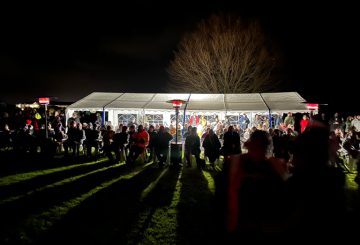This week, the Addison Theatre at Baycourt in Tauranga is hosting “CATS the Musical,” produced by Toni Henderson and Stage Right Theatre Trust. The show opened to a sold-out crowd and exceeded expectations with a stunning display of talent and creativity.
“Cats” is a musical that appeals to those who enjoy spectacle. It’s a nostalgic experience for those who have seen it before and a delight for first-time viewers. The show, which first premiered in 1982, was groundbreaking at the time for its focus on song and dance numbers. It ran for 20 years in London’s West End and remains one of the world’s most beloved musicals.
The musical is based on T.S. Eliot’s 1939 poetry collection ‘Old Possum’s Book of Practical Cats’. Despite the lack of a traditional narrative, the musical tells the story of a tribe of cats called the Jellicles and the night they decide which cat will ascend to the ‘Heaviside Layer’ and come back to a new life.
One of the key moments in the show is centred on Grizabella, an elderly cat rejected by the other cats. Grizabella’s solo, “Memory,” is the show’s main clear plot point as she reminisces about her younger days. Amy Lewin, a local teacher, portrayed Grizabella with emotional depth and beauty.
The show’s success was driven by a talented cast that brought Andrew Lloyd Webber’s beloved characters to life. Each performer demonstrated exceptional vocal prowess and precise choreography, making iconic numbers like “Memory” and “Jellicle Songs for Jellicle Cats” unforgettable.
The production team behind “CATS” deserves immense praise. The set design effectively transformed the stage into a whimsical junkyard, complete with atmospheric lighting. The costumes, wigs and makeup were intricately designed and coloured to capture the essence of each feline character.
Under Toni Henderson’s direction, the pacing of the musical was flawless. The 16-piece live orchestra, led by musical director and conductor Hiro Kobayashi, provided a rich and dynamic accompaniment that perfectly complemented the on-stage action.
In conclusion, the opening night of “CATS the Musical” at Baycourt Theatre was a resounding success. Whether you’re a long-time fan of “CATS” or experiencing it for the first time, this production is not to be missed. “CATS the Musical” will be on at Baycourt from June 15-22.

















































-660x440.jpg)











